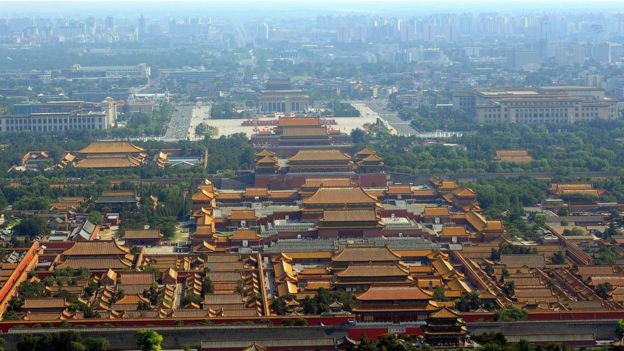When I first came to Beijing in the early 1980s, the city felt dusty overall--a one-time capital of temples and palaces was transformed into a landscape of factories and chimneys, and people rode simple steel bicycles or diesel-belching buses through the windy old streets. This was my initial impression of this capital city.
上世纪八十年代初我初来北京的时候,感觉这里到处尘土飞扬—这座庙宇和宫殿曾经随处可见的古都冒出了很多工厂和烟囱,人们骑着简易的钢架自行车或者乘坐喷着浓烟的柴油公交车在刮着大风的古老街道上穿行—这就是当年我对北京的最初印象。
Leafing through old photo albums, I can still sense the taste unique to old Beijing. Its streets, walls, temples, gardens and alleys were part of a carefully woven tapestry that reflected the constellations above and geomantic forces below. It epitomized the political-religious system that ran traditional China for millennia. It was Chinese belief incarnate.
如今翻看当年的老照片,依然可以感受到老北京特有的味道:街道、高墙、寺院、园林和小巷共同构成了一幅精心编织的挂毯,映衬出天上的星宿与地上的风水。这是传统中国几千年来实行的政教体系的缩影,曾是中国人信仰的尘俗体现。
Sadly, its great city walls and many of its temples and distinctive alleys, or hutong, were destroyed to make way for aggressive industrialization. The 1980s brought economic reforms and unregulated real estate development, which wiped out almost all of the rest of the old town. Like many people who have fallen in love with this city, I was disheartened and felt Beijing’s culture was lost. But in recent years I have come to realize that Beijing’s culture is not dead; it is being reborn in odd corners of the city and in unexpected ways. It is not the same as the past, but vibrant still.
可惜后来为了大力推行工业化建设,北京城内宏伟的城墙、大量的寺庙乃至独特的胡同都遭到损毁。随着八十年代推行的经济改革和房地产行业的无序野蛮开发,残余的旧城区风貌几乎消失殆尽。像许多爱上这个城市的人一样,我感到沮丧,觉得北京的文化已经失落了。但是最近几年,我开始2018/10/29注意到:北京的文化并没有消亡,而是在城市的偏僻角落里,以意想不到的方式得以重生。此时的文化已然异于彼时的文化,但仍然充满活力。












